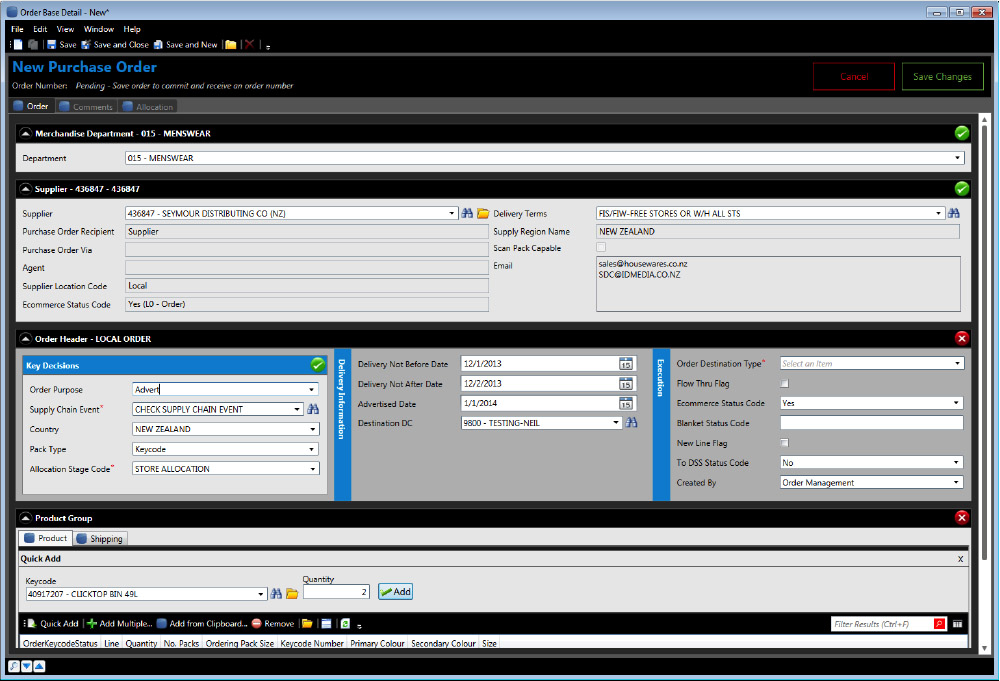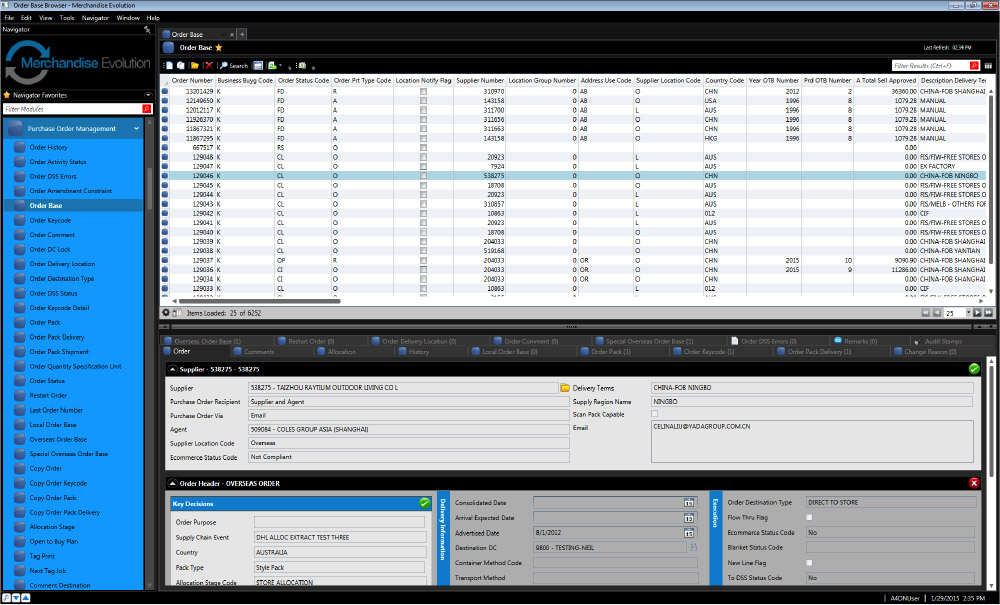A large Australian Retailer with $4.6 billion in annual revenue and operating 185 stores in Australia and New Zealand needed a tool to modernize their applications running on both IBM i and IBM System z as well as be able to access new systems running on Microsoft Windows and SQL Server. Their first project was to rewrite their existing Purchase Order System.
The Problem
 The Retailer's new Purchase Order screen
The Retailer's new Purchase Order screen
- Purchase ordering is a critical merchandise process within the large retailer, with well in excess of 100,000 purchase orders raised annually. With the volume of product being sourced by them, an accurate and efficient purchase ordering process is critical to help support a smooth and cost effective flow of product through the Supply Chain.
- The complexity and flexibility of the current purchase ordering process along with the systems supporting it leads to inconsistency and inefficiency.
- The lack of standardization leads to poor ordering decisions that do not consider overall End-to-End cost. This results in an increased cost of doing business (CODB).
- The key objective of this project was to introduce a Purchase Order process and supporting application that enable a radically simplified and standardized approach to Purchase Ordering within the organization.
The Solution Objectives:
 The Retailer's Purchase Order module
The Retailer's Purchase Order module
- A major objective of this project is to introduce Purchase Order processes and supporting applications to support the introduction of an ordering framework to drive end-to-end lowest cost.
- Need to deliver a simplified and intuitive user experience, reducing the number of decisions that need to be manually made through the ordering process. This approach will deliver significant efficiency benefits through:
- Faster onboarding of new team members
- Reduced time spent in ordering issue resolution
- Greater accuracy leading to removal of order checking
- The modernized (.Net) front end must support a standardized approach to ordering.
- The new application needs to maintain the existing mainframe backend, the application design should allow for the ability to replace this database with a SQL Server database at some point in the future, allowing for further cost reduction for the retailer.
The retailer chose Surround's Accelerator because it met and exceeded all their business solution objectives.